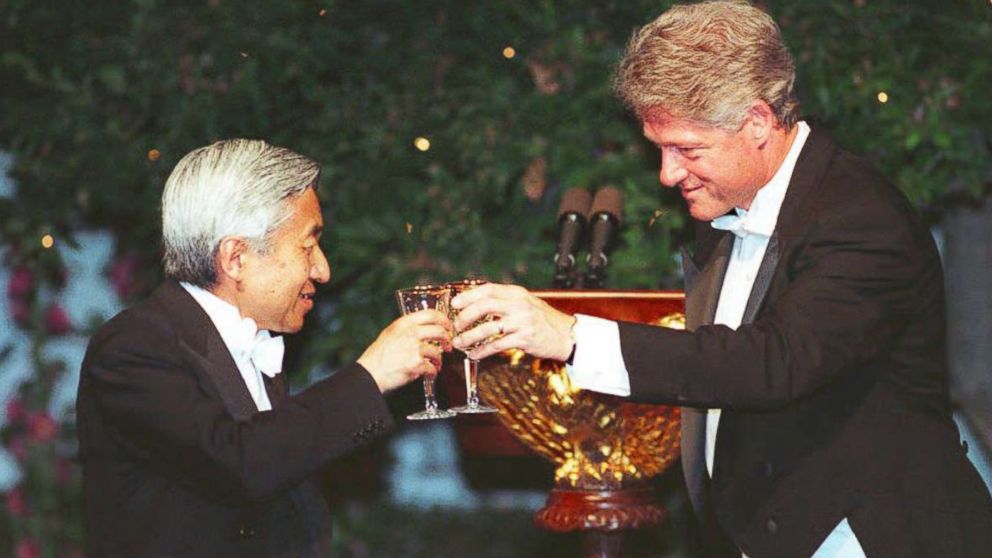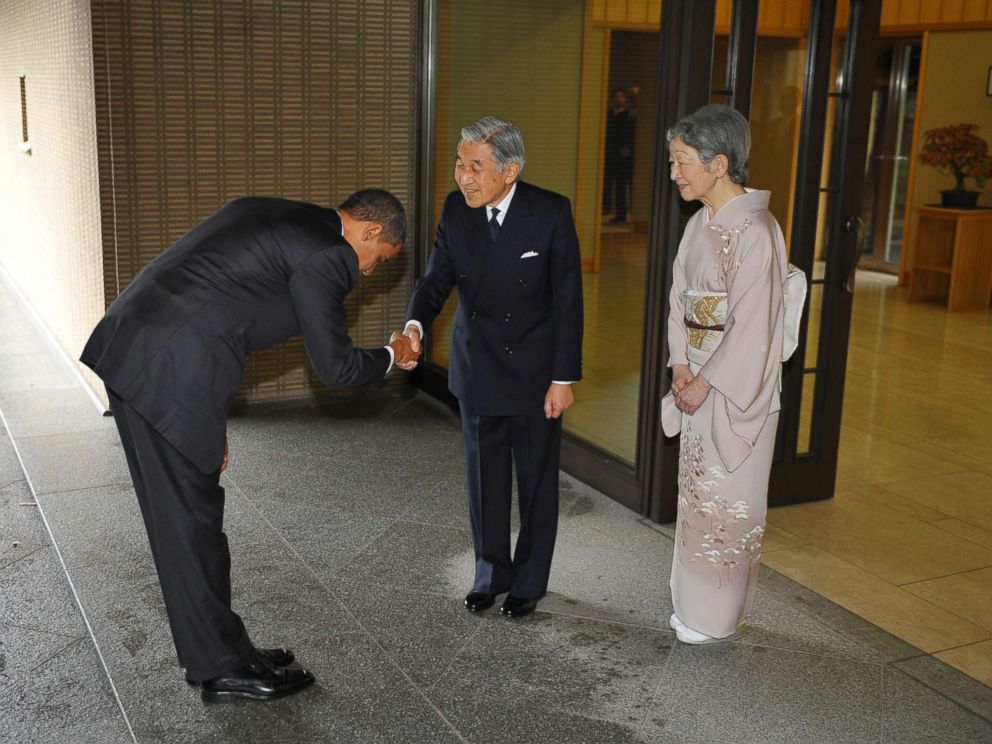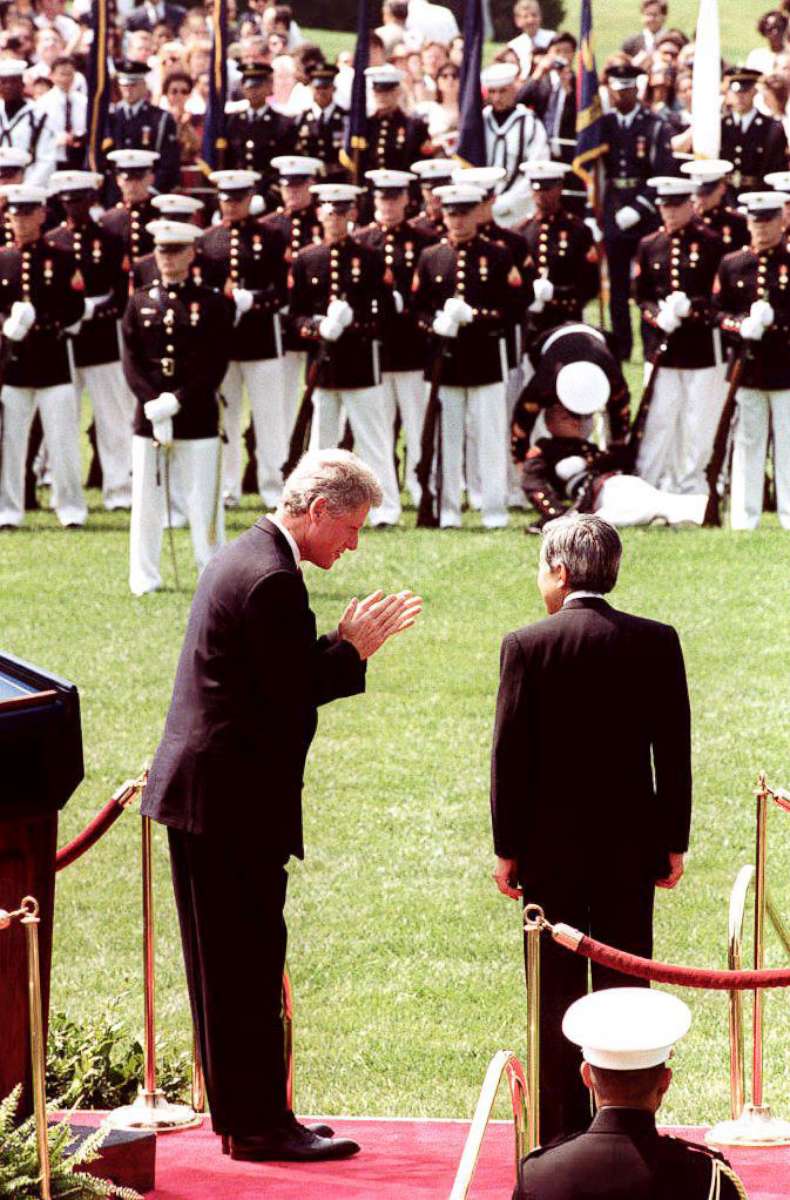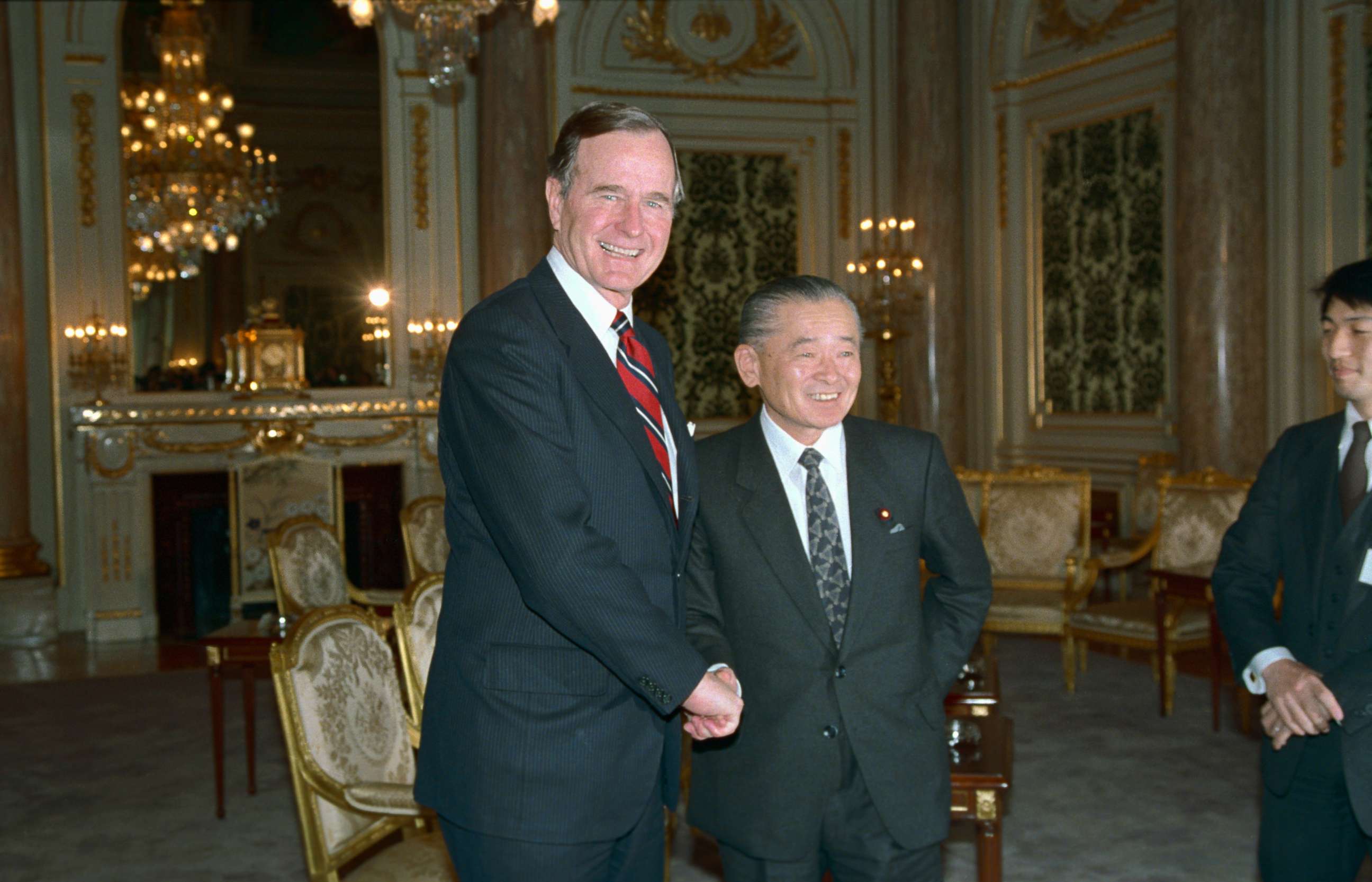How Trump will fare with a tradition many past presidents have struggled to master
How will President Trump greet Japanese Emperor Akihito?

TOKYO -- President Trump faces a historically thorny diplomatic test Monday when he meets Japanese Emperor Akihito for the first time, an encounter steeped in tradition and state protocol that has tripped up three of the last four American presidents.
Trump’s visit to the Imperial Palace will be brief but highly symbolic and closely watched. During the visit of less than 30 minutes, the U.S. president and first lady will aim simply to greet the 83-year-old emperor and his wife, Empress Michiko, as a show of solidarity with the Japanese people.
But greetings between American presidents and Japanese emperors have hardly been simple affairs. The biggest question: Whether or not the president should bow.
In Japanese culture, bowing is a sign of respect and appreciation. The deeper the bow from the waist, the more respect and gratitude are shown.
Bending the torso about 45 degrees or more, known as the “saikeirei” bow, is the strongest expression of deep gratitude or feeling, according to the Japanese National Tourism Organization, which has published guidelines on bowing.
State Department protocols advise U.S. diplomats and presidents to be sensitive to local customs but do not advise bowing.
That hasn’t stopped several recent presidents from bending at the waist when greeting the emperor, sparking intense public debate.

In 2009, on his first official visit to Japan, President Obama bowed deeply from the waist before Emperor Akihito – a move that critics said displayed weakness and lowered the stature of his office even as the White House said it was all about respect.
Obama was later met with criticism when he appeared to bow again in greeting Saudi Arabia’s King Abdullah in 2012. Then-businessman Trump slammed the president on Twitter: “@BarackObama bowed to Saudi king in public – yet the Dems are questioning @MittRomney’s diplomatic skills,” he wrote. The White House denied the bend amounted to a bow.
Now Trump is president and is known to improvise in staid diplomatic settings. How he behaves in the meeting with the Japanese emperor could leave a lasting impression.
In 1994, President Bill Clinton was criticized for greeting Emperor Akihito with a slight bow at the White House ahead of a state dinner for Japan.

"It was not a bow-bow, if you know what I mean," the White House chief of protocol told The New York Times at the time. "Presidents don't bow, and emperors don't toast," one official told the paper. The controversy festered.
But sometimes it seems, presidents have bowed -- and embraced the gesture.
In 1989, President George H.W. Bush bowed before the casket of Akihito’s father, Emperor Hirohito, who led Japan during World War II, at the emperor's state funeral.

Bush, a veteran who was shot down by the Japanese over the Pacific during the Second World War, told reporters the bow was nothing more than a sign of respect.
“I honestly can tell you that I did not dwell on that and didn't feel any sense other than my mind thinking of personal relationships and things of that nature,” Bush said at a press conference the next day.
“I'm representing the United States of America. And we're talking about a friend, and we're talking about an ally,” Bush said.



